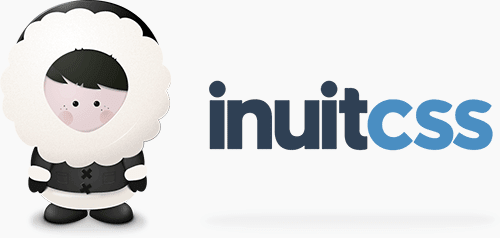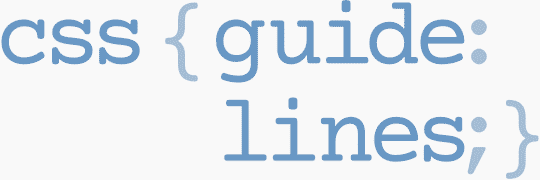CSS Wizardry Blog Archives
I have written 234 post on this site, mostly covering web performance and CSS architecture. Find a reverse-chronological list of them below, or, at random, why not read The implementation ∝ appreciation rule ()?
2025
-
Why Do We Have a Cache-Control Request Header? -
HTML Is Not a Programming Language… -
Build for the Web, Build on the Web, Build with the Web
2024
-
Licensing Code on CSS Wizardry -
A Layered Approach to Speculation Rules -
Designing (and Evolving) a New Web Performance Score -
Core Web Vitals Colours -
The Ultimate Contract Templates for Tech Consultants: Protect Your Business and Get Paid -
Optimising for High Latency Environments -
Cache Grab: How Much Are You Leaving on the Table? -
blocking=render: Why would you do that?!
2023
-
Correctly Configure (Pre) Connections -
The Three Cs: 🤝 Concatenate, 🗜️ Compress, 🗳️ Cache -
What Is the Maximum max-age? -
How to Clear Cache and Cookies on a Customer’s Device -
The Ultimate Low-Quality Image Placeholder Technique -
Core Web Vitals for Search Engine Optimisation: What Do We Need to Know? -
The HTTP/1-liness of HTTP/2 -
In Defence of DOMContentLoaded -
Site-Speed Topography Remapped -
Why Not document.write()?
2022
-
Speeding Up Async Snippets -
Critical CSS? Not So Fast! -
Measure What You Impact, Not What You Influence -
Optimising Largest Contentful Paint
2021
2020
-
Site-Speed Topography -
Speed Up Google Fonts -
Real-World Effectiveness of Brotli -
Performance Budgets, Pragmatically
2019
-
Lazy Pre-Browsing with Prefetch -
Making Cloud.typography Fast(er) -
Time to First Byte: What It Is and How to Improve It -
Self-Host Your Static Assets -
Tips for Technical Interviews -
Cache-Control for Civilians -
Bandwidth or Latency: When to Optimise for Which
2018
-
ITCSS × Skillshare -
What If? -
CSS and Network Performance -
The Three Types of Performance Testing -
Getting to Know a Legacy Codebase -
Image Inconsistencies: How and When Browsers Download Images -
Identifying, Auditing, and Discussing Third Parties -
My Digital Music Setup -
Measuring the Hard-to-Measure -
Finding Dead CSS
2017
-
The Fallacies of Distributed Computing (Applied to Front-End Performance) -
Ten Years Old -
Relative Requirements -
Airplanes and Ashtrays -
Performance and Resilience: Stress-Testing Third Parties -
Refactoring Tunnels -
Little Things I Like to Do with Git -
Writing Tidy Code -
Configuring Git and Vim -
Base64 Encoding & Performance, Part 2: Gathering Data -
Base64 Encoding & Performance, Part 1: What’s Up with Base64? -
Code Smells in CSS Revisited -
Typography for Developers -
Moving CSS Wizardry onto HTTPS and HTTP/2 -
Ack for CSS Developers -
A New Year, a New Focus -
Preparing Vim for Apple’s Touch Bar -
Choosing the Correct Average
2016
-
CSS Shorthand Syntax Considered an Anti-Pattern -
CSS Wizardry Newsletter -
Nesting Your BEM? -
Improving Perceived Performance with Multiple Background Images -
Continue Normalising Your CSS -
Pure CSS Content Filter -
Pragmatic, Practical, and Progressive Theming with Custom Properties -
Refactoring CSS: The Three I’s -
Speaker’s Checklist: Before and After Your Talk -
Improving Your CSS with Parker -
The Importance of !important: Forcing Immutability in CSS -
Mixins Better for Performance -
Managing Typography on Large Apps
2015
-
White October Events Workshop Partnership -
BEMIT: Taking the BEM Naming Convention a Step Further -
Travelling Like You Want to, When You Have To -
Contextual Styling: UI Components, Nesting, and Implementation Detail -
Subtleties with Self-Chained Classes -
Cyclomatic Complexity: Logic in CSS -
Immutable CSS -
Can CSS Be Too Modular? -
More Transparent UI Code with Namespaces
2014
-
When to use @extend; when to use a mixin -
The Specificity Graph -
CSS Wizardry Ltd.: Year 1 in review -
CSS Guidelines 2.0.0 -
Advice to budding front-end developers -
CSS Wizardry referral scheme -
Hacks for dealing with specificity -
Vim for People Who Think Things Like Vim Are Weird and Hard -
Grouping related classes in your markup -
My Trello workflow -
Naming UI components in OOCSS -
Use zero-width spaces to stop annoying Twitter users -
Extending silent classes in Sass
2013
-
Workshop: Event Handler, London, February 2014 -
I wrote (part of) a book! -
My setup -
The problems with ‘crafting’ code -
Taming data tables -
Workshop: Smashing Workshops, Zürich, December 2013 -
Code reviews as a service -
Workshop: Make Do, Leeds, November 2013 -
‘It’s because you’re polite.’ -
Let’s work together -
Make it count -
Speak The Web discount code -
Leeds hangout -
Writing DRYer vanilla CSS -
Hashed classes in CSS -
‘Scope’ in CSS -
The flag object -
shame.css – full .net interview -
shame.css -
.net award nominee -
Introducing csswizardry-grids -
Responsive grid systems; a solution? -
You know your context – on critical thinking and thinking for yourself -
MindBEMding – getting your head ’round BEM syntax -
Your logo is still an image… and so is mine! -
Front-end performance for web designers and front-end developers -
Discussion via Branch
2012
-
A new CSS Wizardry -
My Git workflow for inuit.css -
Code smells in CSS -
A classless class—on using more classes in your HTML -
Announcing pr.ofile.me -
inuit.css v4.0.0—OOCSS, Sass and more -
Canvas Conf, 2012 -
Tags in CSS files -
Shoot to kill; CSS selector intent -
Quasi-qualified CSS selectors -
The open/closed principle applied to CSS -
Single-direction margin declarations -
Keep your CSS selectors short -
Front-Trends 2012 -
The single responsibility principle applied to CSS -
My HTML/CSS coding style -
Comments on CSS Wizardry -
Hacker News rebuttal -
Pragmatic, practical font sizing in CSS -
Breaking Good Habits—The Digital Barn
2011
-
On HTML and CSS best practices -
Measuring and sizing UIs, 2011-style (and beyond) -
Create a notched current-state nav -
Build-along #1, reflection and reasoning -
CSS Wizardry build-along #1 -
Sam Penrose Design—process and write-up -
Fully fluid, responsive CSS carousel -
The CSS Wizardry build-along is go! -
Build-along (testing the water) -
Reset restarted -
The ‘island’ object -
The ‘nav’ abstraction -
Ordered and numbered lists; the differences -
Writing efficient CSS selectors -
Do designers need to code? -
When using IDs can be a pain in the class... -
Two titillating table tips -
Building better grid systems -
Good developers are illusionists -
Updated CV -
More logo markup tips -
Borders on responsive images -
.net magazine awards nominee -
Responsive images right now -
Fluid grid calculator -
Namespacing fragment identifiers -
What is inuit.css? -
Styling alt text on images -
Introducing igloos—inuit.css gets plugins -
DIBI 2011 -
Annotated <figure>s in HTML5 and CSS -
Font sizing with rem could be avoided -
jQuery placeholder plugin/polyfill -
On negative hovers -
Introducing inuit.css -
Ideas of March -
Coding up a semantic, lean timeline -
Link: Technical Web Typography: Guidelines and Techniques -
Problems with the sans-serif hack -
Mobile business card -
Creating a pure CSS dropdown menu -
Pure CSS(3) accordion -
CSS powered ribbons the clean way -
Create a centred horizontal navigation -
Link: Recreating the Luke's Beard social icons with CSS3 -
Using the <body> element as a wrapper -
HTML(5) and text-level semantics -
Client respect -
Maximising hit-area for usability -
HTML elements, tags and attributes -
A new year, a new CSS Wizardry II -
Scrolling overflowed content in iOS -
The real HTML5 boilerplate -
A new year, a new CSS Wizardry
2010
-
Mo’ robust paragraph indenting -
Media queries, handier than you think -
The implementation ∝ appreciation rule -
CSS: CamelCase Seriously Sucks! -
Improving CSS tooltips -
Design and education -
Mark up a semantic, accessible, progressively enhanced, mobile optimised progress bar (bonus: style the numbers in an ordered list!) -
I hate that I love Writer -
Unsung heroes -
Things are changing at CSS Wizardry -
Your logo is an image, not an <h1> -
Good developers vs. good salespeople -
Designing in the browser leads to better quality builds -
In response to ‘Invisible captcha to prevent form spam’ -
Keeping code clean with content -
A quick counter to 'The Digital Agencies of the Future!' -
Set then unset (or reset...?) -
Zebra-striping rows and columns -
Semantics and sensibility -
Building sites without using IDs or classes -
30 days without an iPhone -
Moving forward is holding us back -
A quick note on border radius -
Type tips—quick tips on all things web typography -
Multiple column lists using one <ul> -
Upside down domains—registering an international domain name -
CSS bar charts—styling data with CSS3 and progressive enhancement -
iPhone CSS—tips for building iPhone websites -
The three types of dash -
The importance of proper punctuation -
A reconsideration—in defence of <b> and <i> (or: people fear what they don’t understand) -
A suitable alternative—on proper use of alt attributes
2009

Hi there, I’m Harry Roberts. I am an award-winning Consultant Web Performance Engineer, designer, developer, writer, and speaker from the UK. I write, Tweet, speak, and share code about measuring and improving site-speed. You should hire me.
Connect
Projects

- ITCSS – coming soon…

Next Appearance
-
Talk
 ANWB Front-End Summit: The Hague (Netherlands), June 2025
ANWB Front-End Summit: The Hague (Netherlands), June 2025